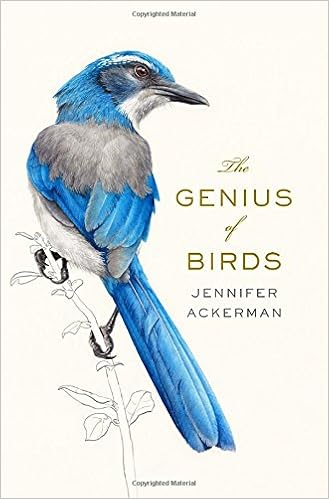 Science stories about the microbiome seem to be as ubiquitous as microbes themselves. There's good reason: it is fascinating to consider that we are home to a completely invisible zoo of microbes, some of which help us to digest our dinner and some of which change our behavior. This intense curiosity has caused some over-hyping of the power that the microbiome can have and the effects that we can exert upon it.
Science stories about the microbiome seem to be as ubiquitous as microbes themselves. There's good reason: it is fascinating to consider that we are home to a completely invisible zoo of microbes, some of which help us to digest our dinner and some of which change our behavior. This intense curiosity has caused some over-hyping of the power that the microbiome can have and the effects that we can exert upon it.In his first book, I Contain Multitudes, Ed Yong navigates the complexity of the microbiome with his characteristic writing, which deftly combines the nuts and bolts of the science with the wow and wonder at the diversity of the natural world. He discusses some of the amazingly weird microbial relationships that occur in nature as well as those that happen on and in the human body. He seems to hit all the high points of the microbial world, including the ubiquitous symbiont Wolbachia, which scientists are just starting to exploit in insect populations to fight Dengue and Zika, and the amazing research into the human microbiome, which included the awesome roller derby study.
A major theme of the book is the evolving view of our relationship with microbes. The publication of the first microscopic images of microbes by Antonie van Leeuwenhoek (1673) led to an appreciation that there was more to life than what meets the naked eye. Once germ theory started to take hold in the time of Pasteur (ca. 1850), we started thinking that the microbial world was all bad and needed to be eradicated. As the theory of symbiogenesis started to come into favor, our thinking about microbes changed again, leading us to see that there could be "good" and "bad" microbial interactions. As I discussed in my recent post on symbiotic theory, many scientists placed symbiosis/cooperation in opposition to Darwinism. However, as scientists explore these relationships more deeply, it becomes clear that these relationships are much more complex. Yong writes that symbiosis is conflict; conflict that can never be totally resolved. Thus, it may be time to re-evaluate the language we use to describe these relationships and consider adding new terms to capture the complexity of these interactions.
Ed Yong has a knack for finding unusual stories, thus there is no shortage of fascinating tidbits here
– all clearly explained and well researched. Two in particular captured my imagination: Sodalis and the mealybug; both of these were adapted for his column in The Atlantic, so you can read these to get a sense of the style of the book. Sodalis is a microbe that has been found as both a free living and a symbiotic organism, so it appears to capture the beginnings of a symbiotic relationship! Mealybugs are insects that form a sort of Russian nesting doll of symbiotic interactions (it's bacteria all the way down!). The mealybug has acquired multiple microbes to solve different metabolic problems. In evolutionary terms, Yong reminds us, this is a smart move. Bacteria are quick to adapt and they are legion, so if you have a problem that needs solving, there are likely microbes that have already found a solution. Biotechnologists and synthetic biologists are just starting to exploit the diversity of microbial functions that have evolved over billions of years of natural selection; they are starting to put existing organisms to work at new tasks, like cleaning up oil spills or radioactive waste, or to design and build completely new organisms to do these things or so many more.
We are really just at the beginning of understanding the microbes around us. Most of the recently published human microbiome studies are little more than inventory lists, with some studies attempting to make correlations for differences in why certain populations are associated with certain microbes – sometimes with conflicting conclusions. Yong explains that we simply do not have large enough samples yet to trust the conclusions; for example, if you sampled ten people off the street where 5 were wearing blue and 5 were wearing green, you could find a few striking differences if you ask them enough questions. This means we need to be careful with the conclusions from microbiome studies until we have more data!
 | |
| Ernst Haeckel's diatoms |
Frankly, I enjoyed reading this book immensely. Yong is an incredibly talented writer and reading his work in long form reminded me how far I still have to go as a writer. I remind myself that he has honed his craft for many years and try to use that as an incentive to keep writing!



